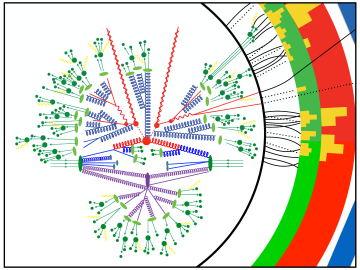
Filter News
Area of Research
- (-) Advanced Manufacturing (6)
- (-) Nuclear Science and Technology (1)
- (-) Supercomputing (66)
- Biology and Environment (47)
- Building Technologies (2)
- Computational Biology (1)
- Computational Engineering (1)
- Computer Science (8)
- Electricity and Smart Grid (1)
- Energy Science (82)
- Energy Sciences (1)
- Functional Materials for Energy (1)
- Fusion and Fission (5)
- Fusion Energy (1)
- Materials (38)
- Materials for Computing (9)
- National Security (15)
- Neutron Science (11)
- Quantum information Science (1)
News Topics
- (-) Artificial Intelligence (38)
- (-) Biotechnology (2)
- (-) Polymers (2)
- (-) Quantum Computing (20)
- 3-D Printing/Advanced Manufacturing (28)
- Advanced Reactors (13)
- Big Data (22)
- Bioenergy (9)
- Biology (11)
- Biomedical (19)
- Buildings (4)
- Chemical Sciences (5)
- Composites (3)
- Computer Science (97)
- Coronavirus (14)
- Critical Materials (3)
- Cybersecurity (9)
- Energy Storage (8)
- Environment (23)
- Exascale Computing (26)
- Frontier (32)
- Fusion (10)
- Grid (5)
- High-Performance Computing (43)
- Isotopes (7)
- Machine Learning (16)
- Materials (21)
- Materials Science (24)
- Mathematics (2)
- Microscopy (7)
- Molten Salt (5)
- Nanotechnology (11)
- National Security (8)
- Neutron Science (19)
- Nuclear Energy (40)
- Partnerships (1)
- Physics (10)
- Quantum Science (25)
- Security (6)
- Simulation (16)
- Software (1)
- Space Exploration (9)
- Summit (43)
- Transportation (6)
Media Contacts

The Frontier supercomputer at the Department of Energy’s Oak Ridge National Laboratory earned the top ranking today as the world’s fastest on the 59th TOP500 list, with 1.1 exaflops of performance. The system is the first to achieve an unprecedented level of computing performance known as exascale, a threshold of a quintillion calculations per second.

Researchers at ORNL are teaching microscopes to drive discoveries with an intuitive algorithm, developed at the lab’s Center for Nanophase Materials Sciences, that could guide breakthroughs in new materials for energy technologies, sensing and computing.

A team of researchers has developed a novel, machine learning–based technique to explore and identify relationships among medical concepts using electronic health record data across multiple healthcare providers.

A study led by researchers at ORNL could help make materials design as customizable as point-and-click.

Lawrence Berkeley National Laboratory physicists Christian Bauer, Marat Freytsis and Benjamin Nachman have leveraged an IBM Q quantum computer through the Oak Ridge Leadership Computing Facility’s Quantum Computing User Program to capture part of a

A force within the supercomputing community, Jack Dongarra developed software packages that became standard in the industry, allowing high-performance computers to become increasingly more powerful in recent decades.

Scientists’ increasing mastery of quantum mechanics is heralding a new age of innovation. Technologies that harness the power of nature’s most minute scale show enormous potential across the scientific spectrum

A rapidly emerging consensus in the scientific community predicts the future will be defined by humanity’s ability to exploit the laws of quantum mechanics.

A team of scientists led by the Department of Energy’s Oak Ridge National Laboratory and the Georgia Institute of Technology is using supercomputing and revolutionary deep learning tools to predict the structures and roles of thousands of proteins with unknown functions.

A world-leading researcher in solid electrolytes and sophisticated electron microscopy methods received Oak Ridge National Laboratory’s top science honor today for her work in developing new materials for batteries. The announcement was made during a livestreamed Director’s Awards event hosted by ORNL Director Thomas Zacharia.


